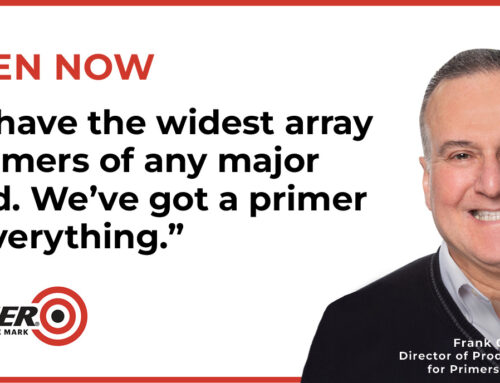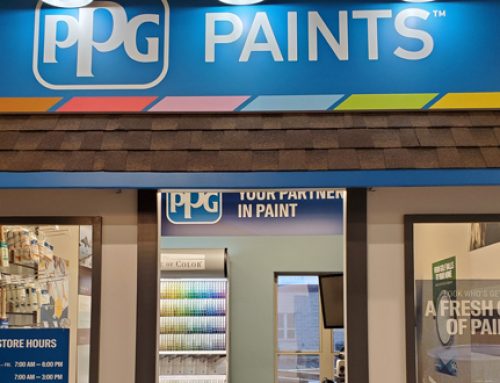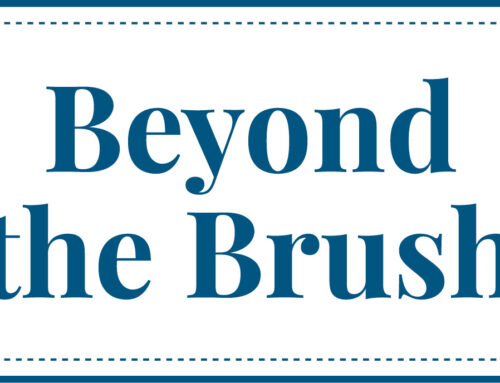If you’re not making price changes today, you may not be in business tomorrow. That’s the stark reality of a market plagued by higher-than-normal inflation and supply chain issues. When cost outruns the shelf price, retailers who fail to keep up may run out of cash. A solid pricing strategy is essential for survival. To learn how retailers are coping with pricing, Paint & Decorating Retailer spoke with two retailers who offer four key components to an effective pricing strategy and a positive price image. Glen Morosohk is the general manager at Ricciardi Brothers Paint, with 48 locations across New Jersey, Pennsylvania and Delaware, and Brad Green owns West Branch Ace Hardware and Standish Ace Hardware in Michigan and is the creator of the Margin Master pricing software.
Review Retails Regularly
This year, inflation has caused prices in the home improvement industry to change frequently, sometimes as often as weekly. That’s a shock for an industry where retailers could typically get by with relatively few price changes.
“In the past, manufacturers would increase prices about once a year,” Morosohk says. “Now with the supply chain shortages and cost of raw materials, we are getting price changes sometimes on a daily basis.”
Managers at Ricciardi Brothers stores are responsible for reviewing and implementing price changes right away. If the price increase is significant, company leadership may increase the price on the shelf gradually so as not to cause sticker shock for the customers, but either way, making price adjustments isn’t optional. Let the price go unchanged for too long and the replacement cost of an item exceeds the price you were selling it for.
Price increases can also be a challenge for his contractor customers, Morosohk says. If they quote a job six months in advance and the price changes, they could lose a lot of money, especially if the price has increased 25% over that time. While he can’t change his price, Morosohk says communication is vital for those customers. He notifies them as soon as he knows about a coming price increase, which puts the responsibility on them to protect their own price with their customers.
As both a retailer and a software developer, Green has spent his career thinking about pricing strategy and helping retailers understand the impact even small price adjustments can make to the bottom line. He says that many retailers have long struggled with pricing, and the current state of inflation will make matters even worse.
“First, lose the assumption that everything is priced correctly in your store,” he says. “Pricing for most retailers is a mess and it’s costing them 2% or 3% profit simply because prices are not where they should be. And you can’t make up the profit you’re losing, for example, by cutting more keys; you need to update your retails to a proper price point.”
But even if prices are perfect in the POS system, the right price still has to make it to the shelf. That’s where many retailers have trouble. One of the most common complaints Green hears from other retailers is that they don’t have time to change prices. To compound the issue, it’s hard enough to find enough staff to wait on customers, let alone change the bin tags for a price adjustment. However, not changing the prices will cost you significant profit dollars and can lead to customer confusion if the price on the shelf doesn’t match the price at the register.
If you’re short staffed or can’t do the changes during regular store hours, you may need to ask employees to stay after for a couple of hours and pay them for the extra time. He suggests finding a way to make the activity fun, such as buying them pizza or a movie ticket.
“If you don’t have time to update prices, you don’t have time to stay in business; it’s a recipe for disaster,” says Morosohk. “If you’re not in the habit of updating prices, then it’s time to reinvent the way you do things. We all wear a lot of hats and time is at a premium, but like anything else, you have to prioritize the importance of what you do. Margin erosion is the cause of death for most businesses. Your survival depends on being able to keep up with price changes. Not changing those prices is costing you thousands of dollars, so whatever it takes, you have to get it done.”
Review Your Pricing Strategy
Higher cost of goods, higher expenses due to inflation and rising labor costs are just a few of the reasons why now, more than ever, retailers need to be savvy about their pricing. If it’s been a while since you reviewed your overall pricing strategy, take the time to analyze every department in your business to make sure you’re maximizing your margins. Be sure you’ve kept up with any changes in the competitive landscape around you, too. Using suggested retail prices is a good start, but you may choose to adjust the prices based on your goals for a particular department.
“Too many retailers blindly follow suggested retail pricing, but there are many unique pricing opportunities and challenges in every market,” says Green. “Implementing an intelligent market driven pricing strategy will deliver an improved bottom line. Establishing pricing that achieves the desired profit levels is the most important role in a retail operation.”
There may be areas where you need to maintain a thin margin to stay in line with competitors on price sensitive items. However, there are also many areas where you can improve margins without affecting your pricing image. Or, you can look for alternative products for some categories.
To compete with the big-box retailers in his market, Morosohk says he shops for alternative products in certain categories that will allow him to make a larger margin. Switching brands on items that are not brand-sensitive to his customers usually allows him the opportunity to either add margin points or just maintain prices at a healthy level.
Another tactic is to utilize price management software such as Green’s Margin Master to keep up with price changes and identify margin opportunities. Many times, price changes will be incremental and customers may not even notice. When Green talks about raising prices, he’s not talking about gouging customers. Rather, he suggests strategically adding a few pennies or dimes to the price on selected items, which will make a big difference for the business.
“I think pricing is critically important. If retailers had a way to drive another 3% or 4% to their bottom line by something other than pricing management, they would do it,” Green says. “They’ve already squeezed their expenses to the max and there’s not a lot of other places to turn for margin improvements. But a small 5% or 10% change in prices adds significantly to the bottom line.”
Have a Price-Matching Policy
Even if you’re making weekly price changes and the cost on the shelf is higher than it’s ever been for consumers, it is still important to maintain your competitive price image. Inflation is hitting all home improvement retailers equally and big-box retailers will also be raising their prices to stay profitable. As it has always been, using a price matching guarantee will be one of the best ways to level the playing field and survive today’s pricing challenges.
“Many retailers may be fearful of it but it’s important they get past it; hang up a banner in your business that says you’ll match anyone’s price,” says Green. “Big-box stores do that and in fact say they’ll beat a competitor’s price by 10%. Don’t be afraid to do that too. If we were to track how many times a customer actually asked to match a price, it’s not very often.”
When a customer does challenge your price, then match it, even if you make little or no margin, he says. If the customer wants you to match the price on an item that is not the same as what you sell, for example, it’s a different brand or model with different features, then take the time to explain the quality differences between your product and the competitor’s. Put the focus on the quality of the product rather than the price.
Even when the price match seems unjustified, don’t send the customer away upset and without the product, because they may never come back. By rejecting their price match request, you will have solidified in that customer’s mind the impression that your prices are too high, especially if they visit a discount retailer and start comparing all of your prices. The cost of losing that one customer, who is sure to tell their friends about their experience, is more than a few dollars lost on a single product.
Instead, says Green, maintain your price image the same way the big boxes do. Price match, but also utilize good merchandising techniques such as endcaps, dump bins and impulse displays. Look for margin opportunities wherever you can, but also make sure you are priced right on all of the price sensitive items. Since you have a price matching policy, customers will perceive you are priced competitively. The amount of price competitive leverage you can gain with a price matching policy far outweighs any money you may lose on a single transaction.
Win on Service
Customers want low prices but also quality. Many retailers offer a combination of competitive prices, outstanding customer service and quality products, but at the end of the day, one of those three will rise to the top as what sets you apart. Customers who find good customer service and a quality product at your business will return. Most will expect to pay a slightly higher price in return for that shopping experience. In the end, a healthy retail strategy should be value-based rather than price-driven. Selling on value may help defer the conversation with the customer away from price and toward what the product will do for them.
“The price may not be the price on the can; we talk with customers about the job as a whole,” says Morosohk. “We look at the cost of the job. There may be certain attributes of the product that make it easier to put on the wall or require fewer coats. It may be more expensive per gallon but saves labor. That is something we can quantify and sell to the customer.”
Look for other ways to add value where your competitors aren’t, such as having a seamless online shopping experience, design services, convenient parking and free delivery. Even during a time of high inflation, value will still make a difference when customers choose where they will shop.
“When a customer pulls out of their driveway and heads for the hardware store, they’ve already made up their mind where they are going,” says Green. “They could turn one way and go to the big-box or turn the other and go to your store. They’re coming to the independent retailer, maybe expecting to pay a premium price, but they are also expecting you to call them by name, ask about their kids and ask them how you can help them. That’s why they‘re coming to you. If they were only looking for the cheapest price, they could order it on Amazon and have it tomorrow.”






